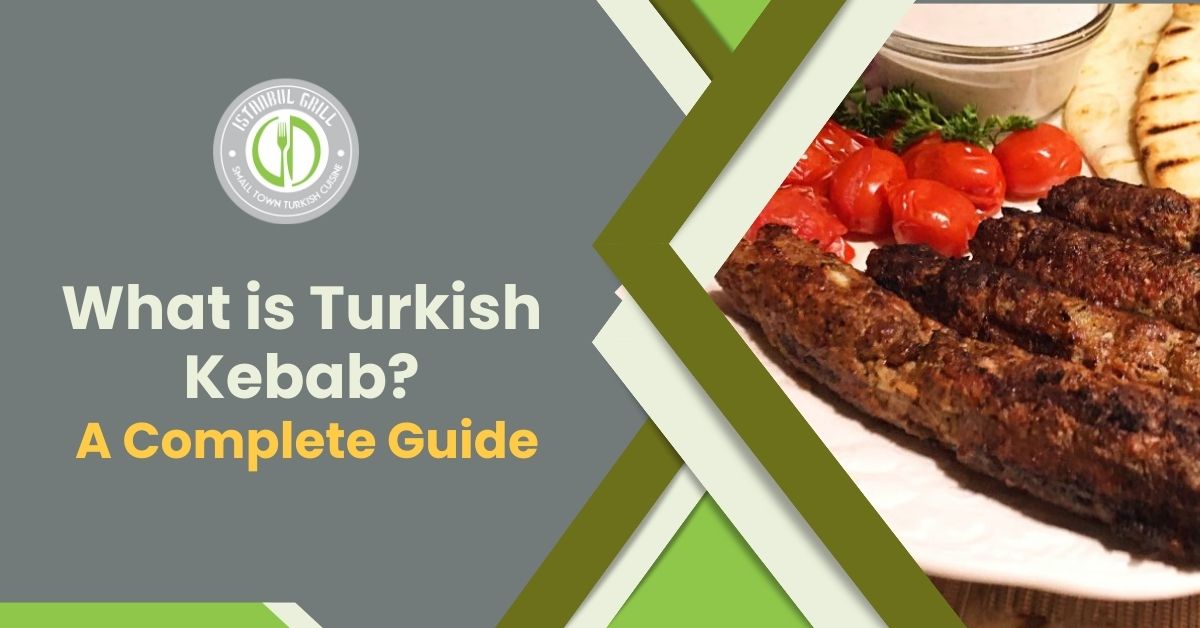Turkish cuisine can be described as exceptional because it combines delightful harmony in the composition of nutrients, attractive colors, and continuity of traditional Turkish food. Especially Turkish delights, it is possible to list desserts as a significant part of Turkish food, which has its exclusive tastes and demands elaborate preparation. Examples include sweets like juice and syrup, in which pastry is soaked to flavor, sweets like baklava, and creamy dishes that feature Turkish cuisine prefixes. In this article, we will venture into the realm of these perfect examples of Turkish pastries and the procedures with which they have been created. The ingredients used, their historical background, and why they play a role in Turkish cuisine. Thus, it will be quite sweet and enjoyable, although full of interesting discoveries, to begin the necessary journey.
Künefe: A Golden Delight
Künefe is a dessert that hails from the Middle East and the kitchen of Turkey and Lebanon. More specifically, it still holds its history of a couple of centuries. It is traditionally cooked in a copper pan and includes kadayıf. The shreds of baked and greased phyllo dough, a special cheese that commonly is Hatay and, when hot, stretches like mozzarella. The dessert is then soaked in a sweet sugar syrup. Thus the dessert will become soft on the inside but crispy at the same time. The syrup is usually drizzled alongside künefe. But a spoonful of buttery clotted cream or powdered chopped pistachios complements the Kunafe taste.
Ingredients and Preparation
Ingredients:
Knowing the important ingredients that go into a Künefe will certainly guarantee a perfect one. One has to use a new kadayıf that is rather crisp for it to gain the right texture when baked. The cheese to be used here should be Hatay or any unsalted cheese that is suitable for melting, which gives the cheese that ‘elasticity’. With the presence of a slight mixture of lemon juice, the sugar syrup that is given is perfectly sweet.
Preparation:
To start with the making of the Künefe, start by buttering the special Künefe pan that is required for the preparation of this dessert. Pour half of the shredded kadayıf dough gently over the pan level it out, and press it down. Spread the cheese over the dough in the same manner that layering of the dough was done. Cover with the remaining kadayıf dough and then, with your hands, press them down again.
Cooking: Put the pan on the cooker over heat and fry until the bottom of the layer is brown. Turn the Künefe using a plate or another pan to cook the other side of the Künefe.
Serving: When both sides are golden, pour the prepared sugar syrup over the hot Künefe. So that it absorbs the syrup. It’s best to consume this warm, freshly baked, and topped with crushed pistachios or a bowl of clotted cream on the side.
Why Künefe is a Must Try?
So, Kunafe is a rather exceptional dessert because it has an interesting structure and taste. The outer layer of the bread is crispy, and golden brown on the outside. While the inside is filled with stringy melted cheese, the combination of the hot syrup complements the bread and cheese. It is invariably taken during the festive season as the best Turkish dessert and remains a popular meal among the people in this region and tourists. Making Künefe in a large pan that is shared, increases the attractiveness of the dish. Thus making it a community dessert.
Turkish Puddings: Creamy Confections
An Overview of Turkish Puddings
Muhallebi, which is in Turkish, is the Turkish pudding, which is part of the dessert cuisine of Turkey. These are usually milk-based products and are a watery type of pudding. It is also available in different flavors awesome in different textures. Unlike the opulent fat pastries, Turkish puddings can be described as lighter and tingly. It is ideal for a tasty ending to a meal.
Types of Turkish Puddings
- Sütlaç (Rice Pudding): Certainly, Sütlaç is the most common type of Turkish pudding prepared with rice, milk, sugar, and with vanilla or cinnamon if it is desired. It is free-flowing and can be taken hot or cold. It’s usually baked to get a surface crust on the bread.
- Kazandibi: Also known as ‘bottom of the pot,’ or ‘Kazandibi,’ obtaining grainy textures, it’s a milk caramel pudding. The bottom layer is made to burn it. It provides a unique caramelized and slightly burnt taste to the pudding, which contrasts with the sweet taste in the preparation.
- Tavuk Göğsü: This is rather an unusual kind of pudding that has been made with chicken breast, milk, sugar, and rice flour. This would perhaps not be expected from a dish containing the breast of a bird. But, Tavuk Göğsü is a pasta-based desert that is radically different in taste and texture from what its name might suggest. It is creamy and rich and it will not smack the tongue hard with its flavor.
- Ashure (Noah’s Pudding): Consequently, Ashure is cooked with grains, fruits, and nuts that are boiled in a sweet and spicy syrup that is served for celebration. This dish is cooked especially during the holy month of Muharram, and the food prepared is given out to society members mostly neighbors and friends, as the best Turkish desserts.
How to Make Sütlaç: A Classic Recipe
Overall, to prepare Sütlaç at home, you do not need many ingredients, but the following are important:
Ingredients:
To prepare this dish, you will require; rice, milk, sugar, and a flavor of your choice—vanilla or cinnamon.
Preparation:
First of all, it will be appropriate to boil the rice in water until it becomes tender. For the second one, warm the milk and sugar together until the sugar melts. Stir in the rice with the milk mixture and continue to cook until pudding reaches the desired texture. To make a baked Sütlaç, pour this into oven-safe bowls and bake until the top has turned golden brown.
Serving:
Sütlaç is best served hot but can also be served cold. Sometimes the finishing touch is a liberal dusting of cinnamon or chopped nuts.
For Turkish puddings, the feelings are rather differentiated, in contrast to the similarly situated sweets. In their preparation, there are few differences or chances for improvisation, and yet there are a great number of varieties. These can be prepared with various spices, nuts, and fruits; therefore, the proportion in each serving will always be unique. Since they are light and creamy, they are suitable to complete a meal’s menu, and not as imposing as some of the other desserts. Just like cheesecake, Turkish puddings are almost sinful, for those who prefer the original Sütlaç or caramelized Kazandibi to exotic Tavuk Göğsü.
Conclusion
Conclusively, traditional Turkish restaurant desserts such as Künefe and the different types of puddings are way beyond mere sweets. They offer more than just a craving fix, they provide a peek into the history of Turkey’s savory cuisine. Every single item narrates a story of the Middle East. Especially the position of the country’s current generation, imprinted on the frailty of the desserts and the grandeur of the frying pans. Here are the best Turkish desserts, as well as an understanding of Turkish culture through these exquisite desserts. Well, next time when you are in the mood for something sweet. Maybe you should try Künefe or any other one or many of the Turkish puddings to get probably the best dessert experience.





